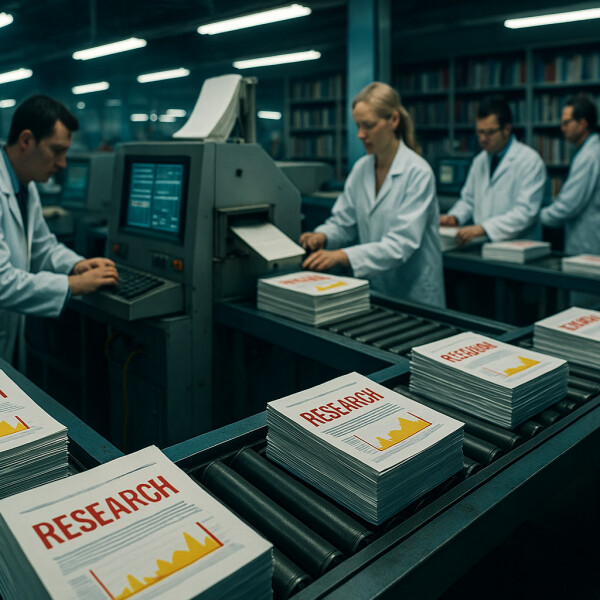A study from Northwestern University, Michigan, in the United States has revealed the scale, complexity and industrialisation of organised scientific fraud, exposing a coordinated global network that has sought to undermine the integrity of academic publishing.
The research team combined case study analysis with large-scale data mining of scientific publications to identify what they described as an expanding ecosystem of so-called ‘paper mills’, intermediary brokers and compromised journals.
These networks have exploited weaknesses in peer review and bypassed quality assurance protocols, allowing falsified research to proliferate at a rate that has now outpaced the growth of legitimate science.
“Science must police itself better in order to preserve its integrity,” said Professor Luís A. N. Amaral, senior author of the study, who is the Erastus Otis Haven Professor of Chemical and Biological Engineering at the McCormick School of Engineering, Northwestern University.
“If we do not create awareness around this problem, worse and worse behaviour will become normalised. At some point, it will be too late, and scientific literature will become completely poisoned.
“Some people worry that talking about this issue is attacking science. But I strongly believe we are defending science from bad actors,” he added.
To document the scale of the problem, the team examined retraction notices, peer review metadata, reports of image duplication and journal indexing data across platforms including Web of Science, Scopus, PubMed, MEDLINE and OpenAlex. Supplementary sources included Retraction Watch and PubPeer. The researchers found patterns of fraudulent collaboration that spanned the entire publishing process.
Amaral explained that these groups operate: “essentially as criminal organisations, acting together to fake the process of science”. He estimated that the trade in authorship, data manipulation and fabricated citations involves financial transactions worth millions of dollars. Paper mills were found to mass-produce manuscripts containing plagiarised text, fabricated results and spurious claims, which are then sold to individuals seeking academic credentials.
“More and more scientists are being caught up in paper mills,” Amaral said.
“Not only can they buy papers, but they can buy citations. Then, they can appear like well-reputed scientists when they have barely conducted their own research at all.”
The lead author is Dr Reese Richardson, a postdoctoral fellow in Amaral’s laboratory added that some paper mills use tiered pricing structures, charging higher fees for first-author status. He also described journals that had implemented sham peer review processes to fast-track fraudulent submissions.
The researchers described a range of operating methods:
Research groups have collaborated across multiple journals to generate large volumes of fraudulent publications.
Brokers have acted as intermediaries between authors, ghostwriters and complicit editors.
Bad actors have targeted vulnerable subfields with limited peer scrutiny.
Journals have evaded delisting by exploiting weaknesses in indexing protocols.
In one striking case, the former journal HIV Nursing, previously operated by a UK-based nursing association, was co-opted after its domain registration lapsed. An unrelated entity assumed its identity and used its website to publish thousands of unrelated papers, all of which remained indexed in Scopus.
To quantify the influence of such practices, the team developed a screening tool for inconsistencies in instrument descriptions in materials science and engineering papers. One such paper – identified as anomalous using this method – was later accepted by the journal PLOS ONE.
Amaral and Richardson have urged the scientific community to implement systemic reforms to counter what they have described as a pervasive and accelerating threat. Their recommendations include tighter editorial controls, improved detection of fabricated content, revision of incentives within academic publishing and a renewed commitment to scientific accountability.
“If we’re not prepared to deal with the fraud that’s already occurring, then we’re certainly not prepared to deal with what generative artificial intelligence can do to scientific literature.
“We have no clue what’s going to end up in the literature, what’s going to be regarded as scientific fact and what’s going to be used to train future AI models, which then will be used to write more papers,” said Richardson.
“This study is probably the most depressing project I’ve been involved with in my entire life,” Amaral said.
“Since I was a kid, I was excited about science. It’s distressing to see others engage in fraud and in misleading others. But if you believe that science is useful and important for humanity, then you have to fight for it,” he concluded.
The findings have been accepted for publication in the Proceedings of the US National Academy of Sciences during the week commencing 4 August 2025.
For further reading please visit: 10.1073/pnas.2420092122
